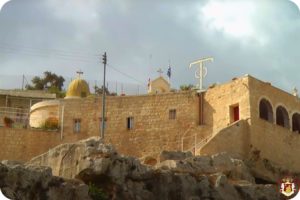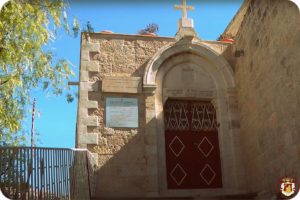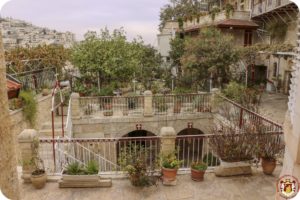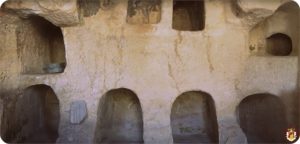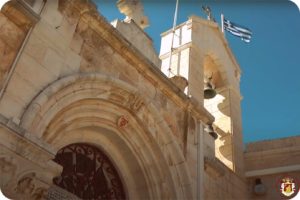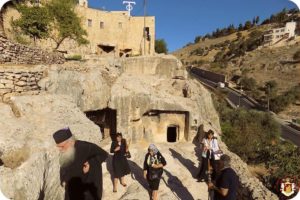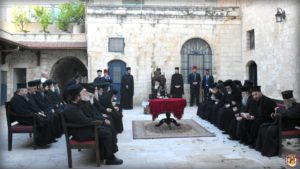CHRISTIAN PILGRIMAGE COULD BE THE ANSWER TO RESTORE LIFE TO THE HOLY LAND
An article by: Heba Hrimat
Whether it is for getting clarity in times of difficulties, or going in the footsteps of Jesus where the miracles of Christmas and Resurrection occurred, the reasons of pilgrimage may vary, but pilgrims to the Holy Land may not realize that their intentional, or sometimes unintentional trips, form a monumental contribution to the Christian existence in the Holy Land, where Christians are undeniably suffering from all sorts of problems, but mainly an existential one.
In a complex region such as the Middle East, where religion and politics clash all the time, pilgrims are considered a bless to the Holy Land and an element of stability, not only because they allow a population that is mostly Jewish and Muslim to breathe a different air, but they are also significantly different from tourists, because they have a horizon of faith that moves by looking at God and the people they meet.
That unfamiliar sight of watching the streets of the Holy Land and mainly Jerusalem and Bethlehem, which used to hustle and bustle with endless tourists’ movement, empty, for the past two years have shut down life as we knew it for families and brought unimaginable suffering to communities which were 100% dependable on income from pilgrims. Hotel employees, tour guides, restaurants’ workers, souvenir shops’ owners and handicrafts makers lost their chances of making any profit and were pushed to the corner with no way out.
Despite the efforts of the Churches of the Holy Land to financially and spiritually aid the different Christian communities (and in many cases the non-Christians as well), the Churches themselves were suffering from the same issue; No real income was pouring in and expenses kept piling up drying out sources of the Churches.
And while everything in the time of Covid seemed possible to be replaced with a virtual alternative; learning at schools and universities swapped with online classes, shopping in stores with online shopping, etc. one thing remained irreplaceable: pilgrimage to the Holy Land, and the after effects of that will unfortunately remain for years to come.
Christians used to account for the largest percentage of annual tourists to the Holy Land. In fact, before the beginning of the pandemic, and specifically at the end of 2019, a whopping 2.5 million Christians visited Israel that year alone, out of the total 4.5 million, according to data from the Israeli Tourism Ministry.
With most pilgrimage aimed at Jerusalem; it comes as no surprise that 85% of the pilgrimage to the Holy Land is focused towards the Holy City.
But there’s a silver lining, both Israel and Palestine have been slowly emerging from the pandemic with the prime focus of bringing back tourism ‘hopefully’ to where it once was.
The Israeli Prime Minister’s office recently announced that starting the beginning of this month Israel is allowing tourists who are vaccinated against COVID-19 or have recovered from the virus, to enter its territories. Meaning that groups of tourists will be allowed to enter the country without Covid booster shot, to further encourage tourism.
On the other hand, the Palestinian Territories, which had almost two years of zero pilgrimage income; completely paralyzing the local economy in tourism-based cities like Bethlehem, which was affected more than the others, is now given (since November 6) the green light to allow tourists for overnight stays.
A gradual recovery is now expected for the first time since the pandemic, people are finally starting to hope again, to believe again. Churches and communities of the Holy Land have never been so eager to warmly welcome back pilgrims who now have the opportunity to visit from around the globe.
